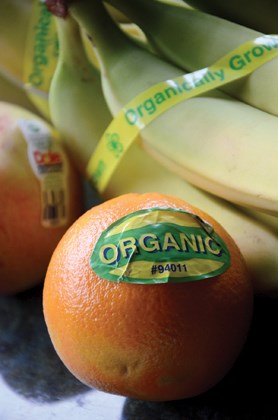As we begin 2014 it's interesting to discover that the trends of necessity may have more staying power than the trends of fancy, and converging factors may shape the year ahead in gardening and society.
To help reveal some of those, here are some highlights of my research into 2014 gardening trends taken from news organizations, the Internet and government. n From worldwatch.org comes the growing trend that corporations of all sizes are starting to pursue a "triple bottom line" mindset. In other words, the cost or effect on people, the planet and profits are being accounted for in the production of goods and services, not just profit alone.
This is good news for everyone and it will likely lead to more sourcing of locally produced goods, less reliance on poisonous chemicals to produce those goods and a greater focus on doing business in way that sustainably harvests from mother earth versus the archaic way of the last century where resources and products were produced regardless of the impact on the planet. As an example, from the Canada Organic Food Trade Association, Canadian sales of certified organic food and nonalcoholic beverages reached $3 billion in 2012, which is triple the value since 2006 with 58 per cent of all Canadians buying organic
products every week.
From conservationmagazine.org, a story by Rob Dunn explains research done by Ilkka Hanski at the University of Helsinki in Finland involving ecologists, immunologists, molecular biologists and allergy specialists who compared the allergies of children living in houses surrounded by biodiverse landscapes and children living in modern homes surrounded by simple concrete and grass. The study found children who lived in houses surrounded by a greater diversity of life were themselves covered with a diversity of microbes, and were less likely to show the telltale immunological signs of allergies. Since the rise of allergies in the 1980s epidemiologists have found that children who grew up on farms had fewer allergies than children living in cities.
The so-called hygiene hypothesis proposed by David Strachan, an epidemiologist at St. George's University of London, suggests that removing biodiversity and reducing exposure to the wide range of microbes and bacteria found on soil, plants and animals deprives the human immune system of the needed exposure to learn the difference between beneficial and potentially harmful microbes.
The trend here is that playing in the dirt and the garden is healthy exposure. And using antibacterial soaps may reduce the immune system's healthy exposure to beneficial microbes in the environment.
The Business Development Bank of Canada (bdc.ca) conducted research and polling of 1,023 Canadians in 2013 to determine consumer spending trends. Their research found several key findings of interest. Firstly, Canadians have expressed a growing concern over health issues and are increasingly looking for products and services to "help them maintain and improve their health."
Secondly, the report found consumers are increasingly aware of the social and environmental factors that affect the production of goods and services. The report states, "A majority of Canadians want to know that companies adopt high ethical and green standards throughout their value chain, with a majority of Canadians making an effort to buy local or Canadian-made products."
Thirdly, the report found that the last economic recession has deeply affected consumer behaviours and its impact continues to this day.
So, despite lingering consumer concerns about the economy, it would seem we are trending towards healthier life choices, green but not green-washed companies with a focus on buying Canadian. n A plethora of trends for 2014 are noted on gardenmediagroup.com - too many to go into here - and some interesting insights were revealed. For example, in the United States, more money is spent on food gardening than on flower gardening. Also found was a shift in where consumers get their gardening information. The site suggests that even though social networking and the Internet showed small increases as desirable places to find gardening information while all other sources declined, gardening information was most often sourced: From friends and neighbours 47 per cent of the time; garden centres, nurseries and classes at 44 per cent; magazines and newspapers at 34 per cent; and, books at 32 per cent.
Other trends from Garden Media include the rise of super foods to improve our health, an increasing awareness of the value of composting and recycling, declining bee populations demonstrating their importance to people, and the increase in green space and plants in corporate buildings to relieve stress and increase productivity.
However, the most popular trend in gardening is, as it has always been, to create beauty within a sense of place that is a sanctuary away from the crazy world, because there is no app for life or gardening, you have to be in the moment and live it.
Todd Major is a journeyman horticulturist, garden designer and builder, teacher and organic advocate. [email protected]



